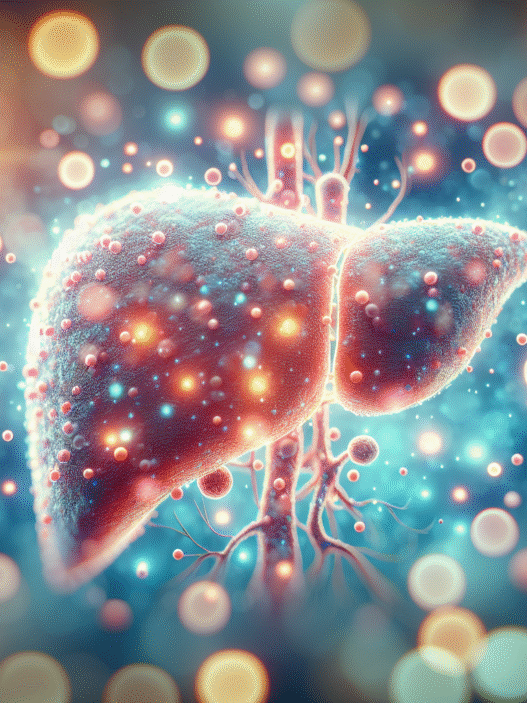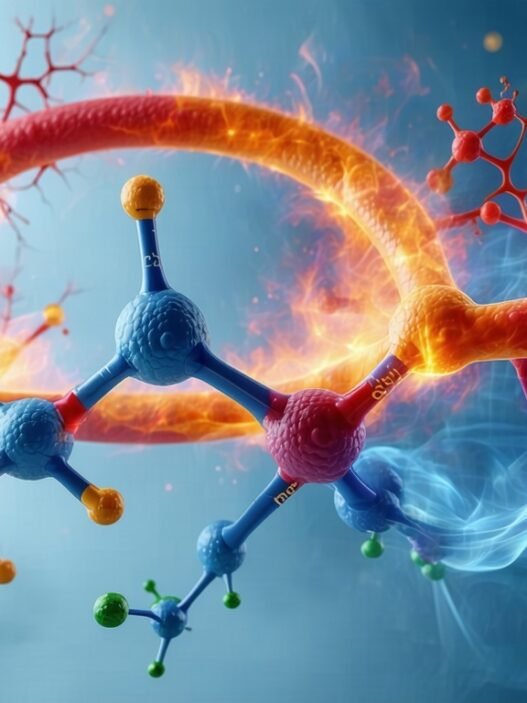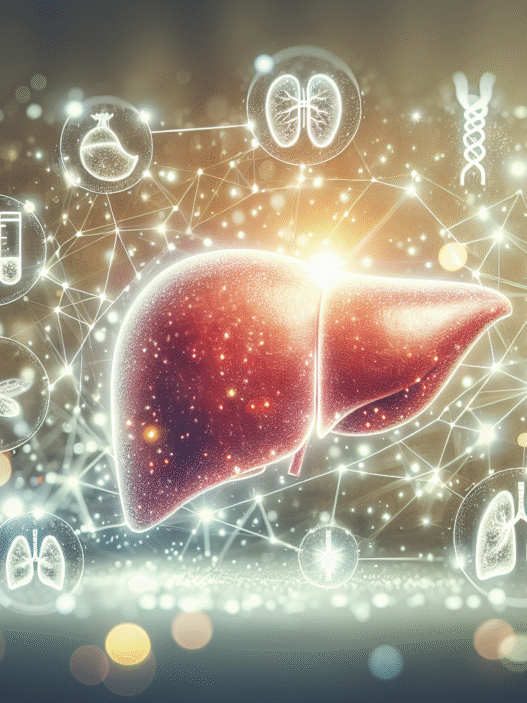NAC vs. Milk Thistle for Liver Health
In the quest for better liver health, individuals often explore various supplements. Two popular options are N-acetylcysteine (NAC) and milk thistle. This section will provide an overview of each supplement’s properties and how they contribute to liver wellness.
Understanding N-Acetyl Cysteine (NAC)
N-acetylcysteine (NAC) is a powerful antioxidant and a derivative of the amino acid cysteine. It is known for enhancing liver function and protecting against oxidative stress. NAC has shown promising results in individuals with conditions like non-alcoholic fatty liver disease. According to research, NAC can lead to significant decreases in serum alanine aminotransferase (ALT) levels after three months of use, which suggests improved liver function.
NAC acts by replenishing glutathione levels, a critical antioxidant that helps detoxify the liver and neutralize harmful compounds in the bloodstream. As a result, it may provide protection against the daily exposure to free radicals, thereby contributing to overall liver health. For more on its uses, check our article on what is NAC N-acetyl cysteine used for?.
Exploring Milk Thistle Benefits
Milk thistle, derived from the Silybum marianum plant, has been used for centuries as a natural remedy for liver issues. It is primarily praised for its active ingredient, silymarin, which exhibits strong antioxidant properties. Milk thistle is commonly promoted for its liver-protecting effects and is often used in complementary therapies for liver damage associated with conditions like alcoholic liver disease, hepatitis, and even liver cancer.
Studies suggest that milk thistle may help combat oxidative stress and enhance liver regeneration. However, the clinical efficacy of milk thistle remains uncertain due to inconsistencies in study methodologies, small sample sizes, and variations in formulation and dosing. This variability makes it challenging to establish clear guidelines on its use for liver health (NCBI Bookshelf).
Both NAC and milk thistle exhibit promising properties for liver support. Although NAC has more robust evidence supporting its effectiveness in improving liver function, milk thistle is still widely recognized and used for its potential benefits. Further research is necessary to compare the two and determine which may be more effective in promoting liver health. If you’re curious about how these two supplements can be integrated into your regimen, you may want to learn more about whether NAC is good for your liver or how they can be safely combined for optimal benefits.
Mechanisms of Action
Understanding how N-Acetyl Cysteine (NAC) and milk thistle work in promoting liver health can provide insights into their effectiveness. Both substances have unique mechanisms that benefit liver function.
NAC’s Role in Liver and Kidney Function
NAC is known for its ability to improve liver and kidney function by enhancing the breakdown of drugs and toxins in the body. This can be particularly beneficial for individuals facing liver or kidney diseases. NAC has shown potential in treating acetaminophen overdose by boosting glutathione levels, which helps in breaking down acetaminophen to prevent liver or kidney damage if administered promptly within eight to ten hours of an overdose.
In patients with non-alcoholic fatty liver disease, NAC administration has resulted in a significant decrease in serum alanine aminotransferase (ALT) levels after three months, indicating improved liver function. This effect occurred independently of the initial fatty liver disease severity (PubMed Central). Furthermore, animal studies have demonstrated that NAC may block lipid peroxidation, thus preventing the development of non-alcoholic fatty liver disease and ameliorating liver health.
| Mechanism | Benefit |
|---|---|
| Enhances glutathione levels | Protects liver and kidneys from toxins |
| Decreases ALT levels | Improves liver function in fatty liver disease |
| Blocks lipid peroxidation | Prevents fatty liver disease progression |
Silymarin in Milk Thistle
Silymarin, the active compound found in milk thistle, is known for its hepatoprotective properties. It is believed to improve liver function by promoting the regeneration of liver cells and enhancing the detoxification processes within the liver. Silymarin helps in stabilizing cell membranes, making them more resistant to toxic substances.
Research suggests that silymarin has antioxidant properties that can protect liver cells from damage caused by free radicals. This may be beneficial for individuals suffering from liver diseases, as it can help reduce inflammation and fibrosis (WebMD).
Moreover, milk thistle has shown potential in modulating liver enzymes, which can assist in maintaining optimal liver health. While more research is warranted, the effects of silymarin on liver health have sparked interest for those concerned about liver detoxification and overall longevity.
| Mechanism | Benefit |
|---|---|
| Promotes liver cell regeneration | Aids in liver recovery and function |
| Provides antioxidant protection | Reduces oxidative stress in liver cells |
| Modulates liver enzymes | Supports overall liver health |
Both NAC and silymarin present viable options for promoting liver health. Understanding these mechanisms may help individuals decide whether NAC or milk thistle is better for the liver. As research continues, more comprehensive insights into their benefits will emerge, aiding those focused on liver health and detoxification.
Efficacy Studies
Research on NAC Benefits
N-Acetyl Cysteine (NAC) has garnered attention for its potential benefits in liver health. Several studies indicate that NAC plays a crucial role in treating acetaminophen overdose by boosting glutathione levels, thereby preventing liver or kidney damage when administered promptly (WebMD).
In addition to its role in acute liver conditions, research suggests that NAC may aid in improving liver and kidney function. It accelerates the breakdown process of drugs and toxins, which could be beneficial for individuals diagnosed with liver or kidney disease, although further investigation is required to confirm its efficacy.
A significant study highlighted that NAC could improve liver function in patients suffering from non-alcoholic fatty liver disease (NAFLD). In this clinical trial, participants who received NAC showed a notable reduction in serum ALT levels compared to those receiving vitamin C, indicating a positive effect on liver health (PubMed Central).
Clinical Evidence for Milk Thistle
Milk thistle, particularly its active compound silymarin, has also been researched extensively for its hepatoprotective effects. Clinical studies demonstrate that silymarin can help ease inflammation and promote cell repair in various liver conditions such as jaundice, cirrhosis, liver cancer, and fatty liver disease.
Reviewing comparative studies on the effectiveness of silymarin, evidence suggests that it aids in reducing liver enzyme levels and improving overall liver function, making it a common recommendation for patients with liver disorders. The data implies that regular consumption of milk thistle may significantly benefit those looking for natural support for liver health.
A side-by-side comparison of the biochemical effects of NAC and silymarin can help individuals determine is NAC or milk thistle better for the liver?. Each compound offers unique advantages, which may vary depending on individual health needs and circumstances.
Health Implications
Applications in Liver Diseases
N-Acetyl Cysteine (NAC) has shown promising benefits for liver health, particularly in treating liver diseases like non-alcoholic fatty liver disease (NAFLD). Research indicates that NAC can help improve liver function by significantly decreasing serum alanine aminotransferase (ALT) levels, a marker of liver damage. In studies, patients using NAC reported better outcomes compared to those treated with vitamin C, even irrespective of the initial grade of steatosis.
| Condition | NAC Effect | Comparison to Vitamin C |
|---|---|---|
| Non-Alcoholic Fatty Liver | Decrease in ALT levels | Better outcomes |
| Steatosis | Independent effect observed | No significant change |
| Spleen Size | Reduction observed | Not applicable |
Additionally, NAC has the ability to block lipid peroxidation, which is crucial in preventing NAFLD and improving liver histology in models of non-alcoholic steatohepatitis (NASH).
Potential Benefits for Other Conditions
Beyond its applications in liver disease, NAC has several potential benefits for other health conditions. It plays a role in reducing oxidative stress, which can be beneficial in conditions characterized by inflammation and oxidative damage.
NAC can also support respiratory health by helping to clear mucus, making it useful for chronic obstructive pulmonary disease (COPD) and other respiratory ailments (WebMD). Moreover, emerging studies suggest its effectiveness in mental health contexts, including its potential role in addressing anxiety and improving sleep quality.
| Condition | NAC Benefit |
|---|---|
| Respiratory Disorders | Mucus clearance |
| Anxiety | Potential reduction |
| Sleep Quality | Improvement observed |
For comprehensive insights on what NAC is used for, see our article on what is NAC N-Acetyl Cysteine used for?.
As research continues to examine the far-reaching implications of NAC, understanding its role in liver health versus other conditions will provide a clearer picture for individuals seeking to optimize their overall well-being.
Safety and Side Effects
Understanding the potential side effects of N-Acetyl Cysteine (NAC) and milk thistle is crucial for making informed decisions about liver health. Both substances may offer benefits, but they can also come with risks.
Adverse Reactions to NAC
NAC is generally considered safe for most individuals, but some may experience adverse reactions. Common side effects include gastrointestinal discomfort, such as nausea and diarrhea. Rarely, more severe effects like allergic reactions or changes in blood pressure may occur. It’s important to consult with a healthcare provider if experiencing concerning symptoms or if one has underlying health conditions.
| Common Side Effects of NAC | Frequency |
|---|---|
| Nausea | Common |
| Diarrhea | Common |
| Allergic Reactions | Rare |
| Changes in Blood Pressure | Rare |
NAC has shown potential in improving conditions like non-alcoholic fatty liver disease (NAFLD) by decreasing liver enzyme levels. It has also been shown to reduce spleen size in patients with NAFLD (PubMed Central). For those wondering about the effects of daily use, further information can be found in our article on is it ok to take nac everyday?.
Possible Risks of Milk Thistle
Milk thistle is known for its hepatoprotective properties, attributed to its active component silymarin. Although it is generally well-tolerated, it can cause side effects, particularly gastrointestinal disturbances such as diarrhea and stomach cramps. Individuals should approach milk thistle with caution if they have allergies to plants in the Asteraceae family, as they may have an increased risk of allergic reactions.
| Common Side Effects of Milk Thistle | Frequency |
|---|---|
| Diarrhea | Common |
| Stomach Cramps | Common |
| Allergic Reactions | Rare |
Research is still ongoing to quantify the exact frequency and severity of adverse effects associated with milk thistle preparations (NCBI Bookshelf). For more information on the potential benefits for liver health, refer to our article on does milk thistle help the liver?.
Both NAC and milk thistle have promising benefits but also present risks that must be weighed carefully. Individuals concerned about liver health should consider consulting a healthcare professional to discuss the best approach for their specific needs.
Considerations and Usage
Choosing between N-acetyl cysteine (NAC) and milk thistle for liver health involves understanding their dosages, administration methods, and compatibility with each other.
Dosage and Administration
NAC can be administered in various ways, including orally, intravenously, or through inhalation. Its absorption and metabolism vary with each route, impacting bioavailability. Here is a general guide for oral administration:
| Formulation | Typical Dosage (mg) |
|---|---|
| Oral Tablets | 600 – 1,800 mg daily |
| Intravenous | 150 mg/kg over 60 minutes (for specific conditions) |
| Inhalation | Doses vary based on clinical context |
For more details on uses and safety considerations, see our article on what is nac n-acetyl cysteine used for?.
Milk thistle, often containing silymarin, typically follows these dosage guidelines:
| Formulation | Typical Dosage (mg) |
|---|---|
| Silymarin Extract | 140 – 600 mg daily |
| Ground Seeds | 1,500 mg daily |
Consult a healthcare provider for personalized dosage, as individual needs may vary based on health conditions and treatment goals. Both NAC and milk thistle are generally considered safe when taken within therapeutic ranges, and clinical evidence suggests they effectively support liver health (Life Extension).
Combining NAC and Milk Thistle
Research indicates that NAC and milk thistle can be taken together without adverse interactions when dosages are within therapeutic limits. Both supplements have demonstrated benefits for liver health, helping to mitigate oxidative stress and enhance detoxification processes.
When combining these two supplements, it is important to monitor for any unexpected side effects. The following table outlines the combined benefits:
| Benefit | NAC | Milk Thistle |
|---|---|---|
| Protects liver cells | Yes | Yes |
| Reduces oxidative stress | Yes | Yes |
| Aids detoxification | Yes | Yes |
| Improves overall liver function | Yes | Yes |
For effective use, individuals should ensure that they are not exceeding the recommended dosages of either supplement. If there are specific health conditions or concerns, consulting with a healthcare professional is advisable before starting any new supplement regimen. For further information on potential uses for NAC, read about is nac good for your liver?.





















